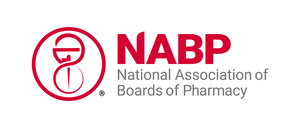NABP, Stakeholders Release Consensus Document on the Challenges and "Red Flag" Warning Signs Related to Prescribing and Dispensing Controlled Substances
Document Seeks to Help Prevent Diversion and Abuse While Maintaining Legitimate Access to Medications
MOUNT PROSPECT, Ill., March 12, 2015 /PRNewswire-USNewswire/ -- A coalition of stakeholder organizations released a consensus document representing the medical, pharmacist, and supply chain spectrum highlighting the challenges and "red flag" warning signs related to prescribing and dispensing controlled substance prescriptions. As detailed in the consensus document, the goal is to provide health care practitioners with an understanding of their shared responsibility to ensure that all controlled substances are prescribed and dispensed for a legitimate medical purpose, as well as to provide guidance on which red flag warning signs warrant further scrutiny. Overall, challenges faced by health care practitioners in regard to prescribing and dispensing controlled substances can be overcome through collaboration, communication, and broader efforts to prevent the diversion and misuse of controlled substances while ensuring access to the medications for patients who need them for legitimate reasons.
The stakeholders initially met on October 2, 2013, and subsequently met numerous times over the course of 2013 and 2014 to discuss the aforementioned challenges and red flag warning signs including categorizing the signs to indicate the likelihood that diversion, misuse, or abuse are occurring. In fostering the understanding of health care practitioners' roles, the dialogue and resulting consensus document shed light on unappreciated challenges, such as the demands placed on physicians to provide direct patient care and the pharmacist's corresponding responsibility under Drug Enforcement Administration regulations to ensure controlled substance prescriptions are legitimate. The red flag warning signs for both physicians and pharmacists were placed into two categories – those factors more indicative of substance abuse or diversion, and other aberrant medication-related behaviors and factors potentially indicative of substance abuse or diversion. Below is the coalition of stakeholders that, along with the National Association of Boards of Pharmacy® (NABP®), supports the consensus document:
- American Academy of Family Physicians
- American College of Emergency Physicians
- American Medical Association
- American Osteopathic Association
- American Pharmacists Association
- American Society of Anesthesiologists
- American Society of Health-System Pharmacists
- Cardinal Health
- CVS Health
- Healthcare Distribution Management Association
- National Association of Chain Drug Stores
- National Community Pharmacists Association
- Pharmaceutical Care Management Association
- Purdue Pharma L.P.
- Rite Aid
- Walgreen Co
The consensus document, "Stakeholders' Challenges and Red Flag Warning Signs Related to Prescribing and Dispensing Controlled Substances," is available under Position Papers in the Members section of the NABP website, www.nabp.net.
NABP is the independent, international, and impartial Association that assists its state member boards and jurisdictions for the purpose of protecting the public health.
SOURCE National Association of Boards of Pharmacy
Related Links
WANT YOUR COMPANY'S NEWS FEATURED ON PRNEWSWIRE.COM?
Newsrooms &
Influencers
Digital Media
Outlets
Journalists
Opted In




Share this article